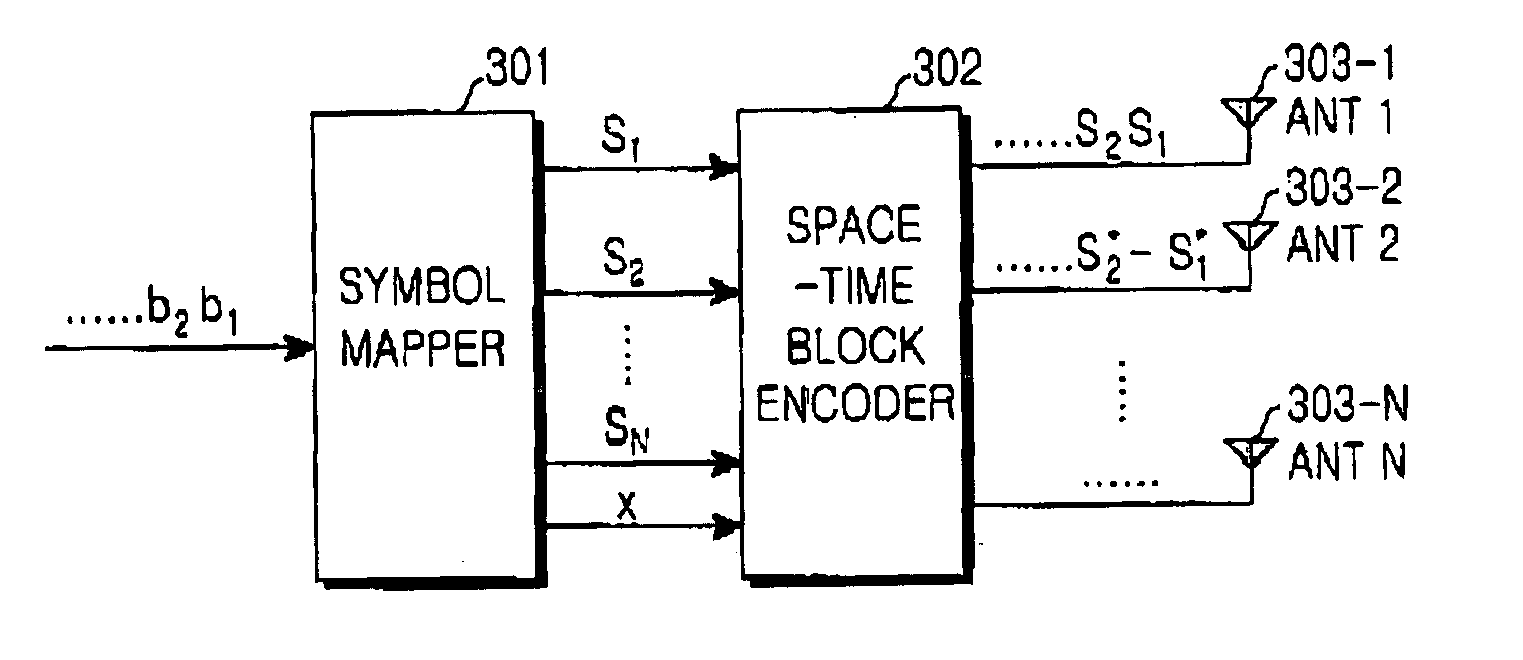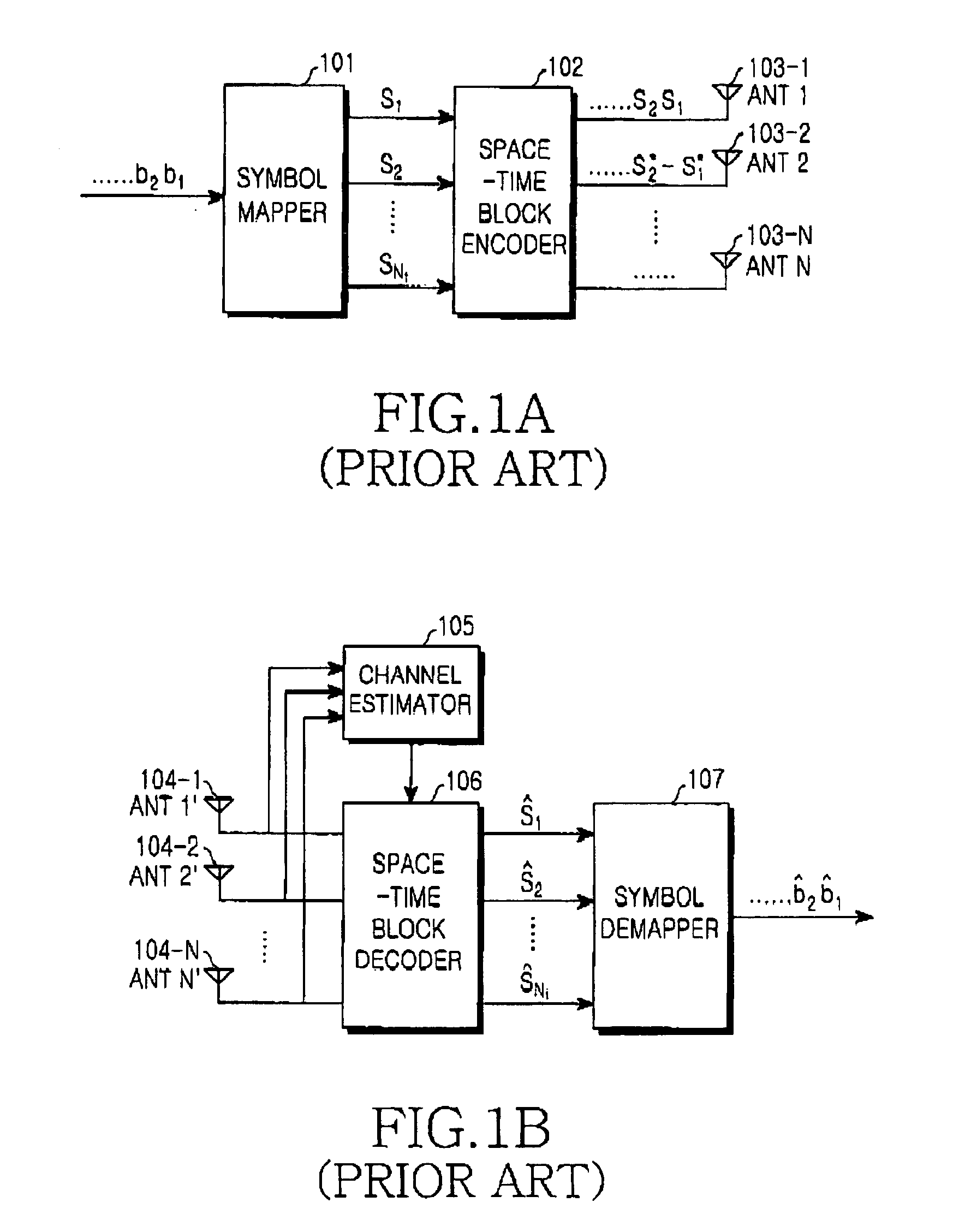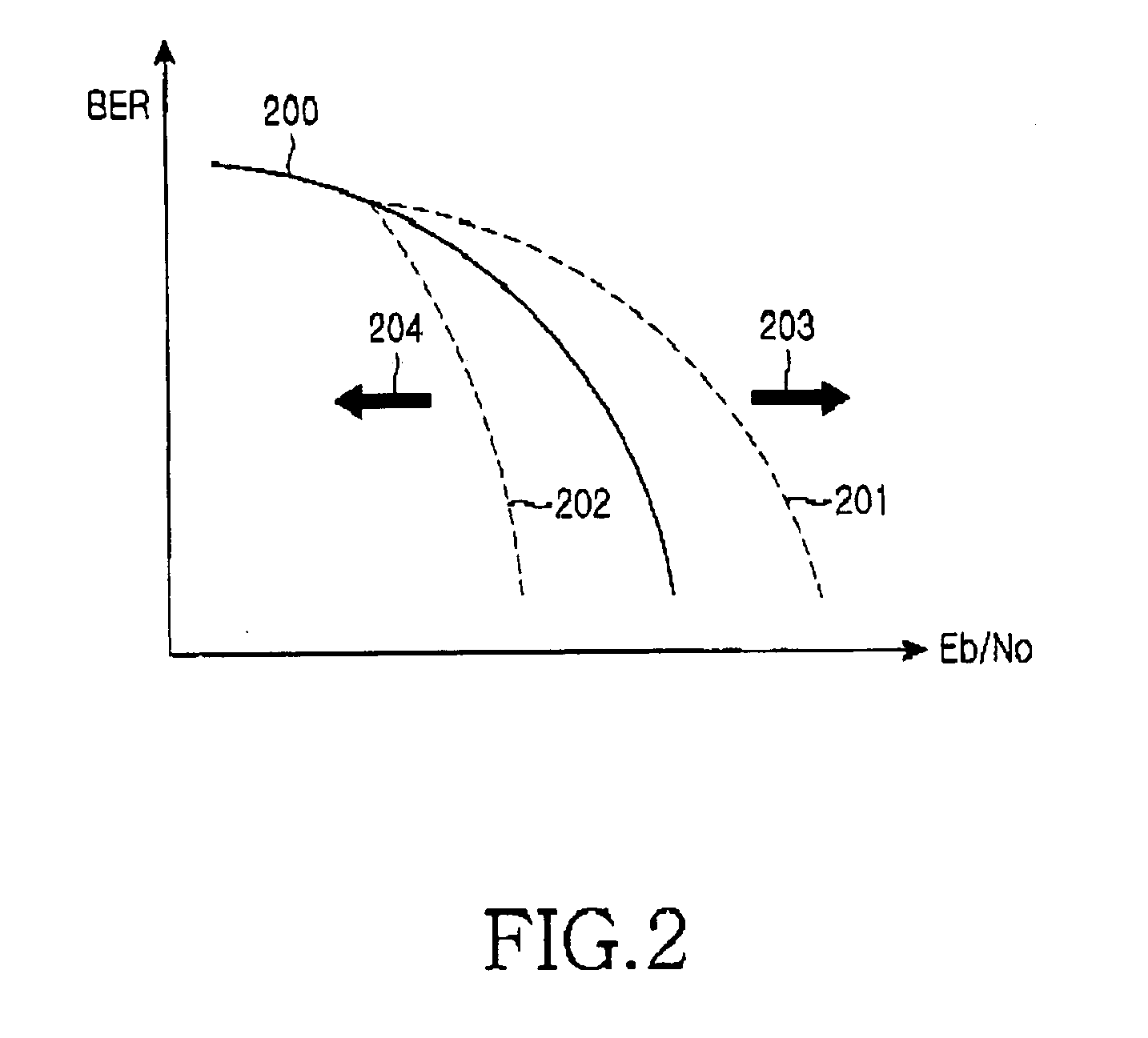Space-time block coding method using auxiliary symbol
a space-time block and coding method technology, applied in the field of space-time block coding methods, can solve the problems of limiting data rate counterbalances that hinder full use of benefits, etc., and achieve the effect of improving error detection performance and reducing system flexibility in using space-time block codes
- Summary
- Abstract
- Description
- Claims
- Application Information
AI Technical Summary
Benefits of technology
Problems solved by technology
Method used
Image
Examples
Embodiment Construction
[0023] A preferred embodiment of the present invention will be described herein below with reference to the accompanying drawings. In the following description, well-known functions or constructions are not described in detail since they would obscure the invention in unnecessary detail.
[0024] A multiple transmit / receive antenna system offers two main benefits. One is to improve the error detection performance of a transmitted signal by implementing signal diversity and the other is to increase the data rate by transmitting a large amount of data at the same time through the process of multiplexing. Space-time block coding is a scheme of achieving transmit diversity using multiple transmit antennas.
[0025] When sufficient transmit diversity can be achieved by increasing the number of transmit antennas in the transmitter, or when despite a lack of transmit antennas, sufficient receive diversity can be achieved by increasing the number of receive antennas, the performance improvement...
PUM
 Login to View More
Login to View More Abstract
Description
Claims
Application Information
 Login to View More
Login to View More - R&D
- Intellectual Property
- Life Sciences
- Materials
- Tech Scout
- Unparalleled Data Quality
- Higher Quality Content
- 60% Fewer Hallucinations
Browse by: Latest US Patents, China's latest patents, Technical Efficacy Thesaurus, Application Domain, Technology Topic, Popular Technical Reports.
© 2025 PatSnap. All rights reserved.Legal|Privacy policy|Modern Slavery Act Transparency Statement|Sitemap|About US| Contact US: help@patsnap.com



